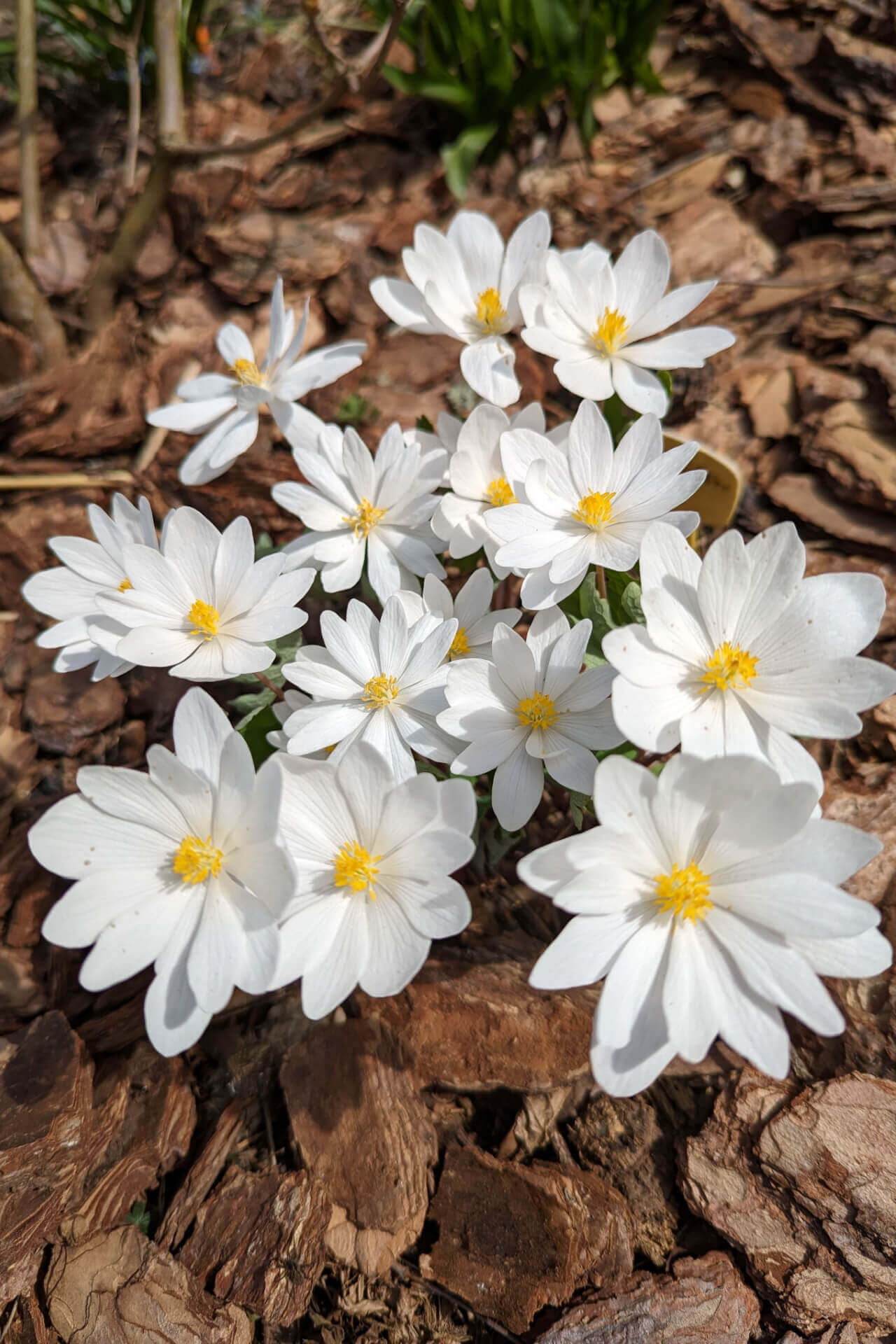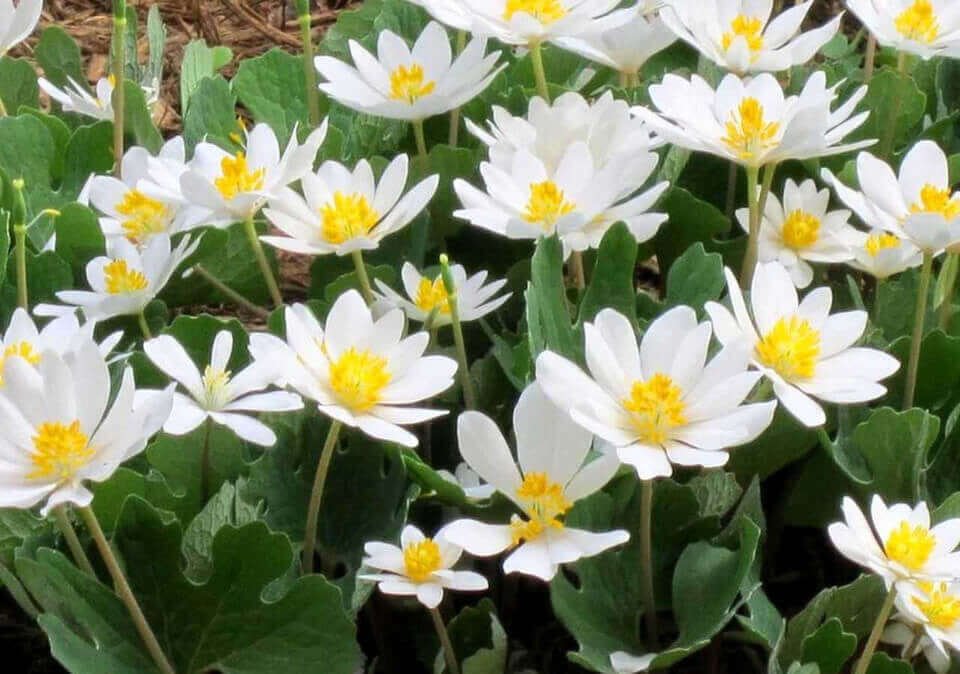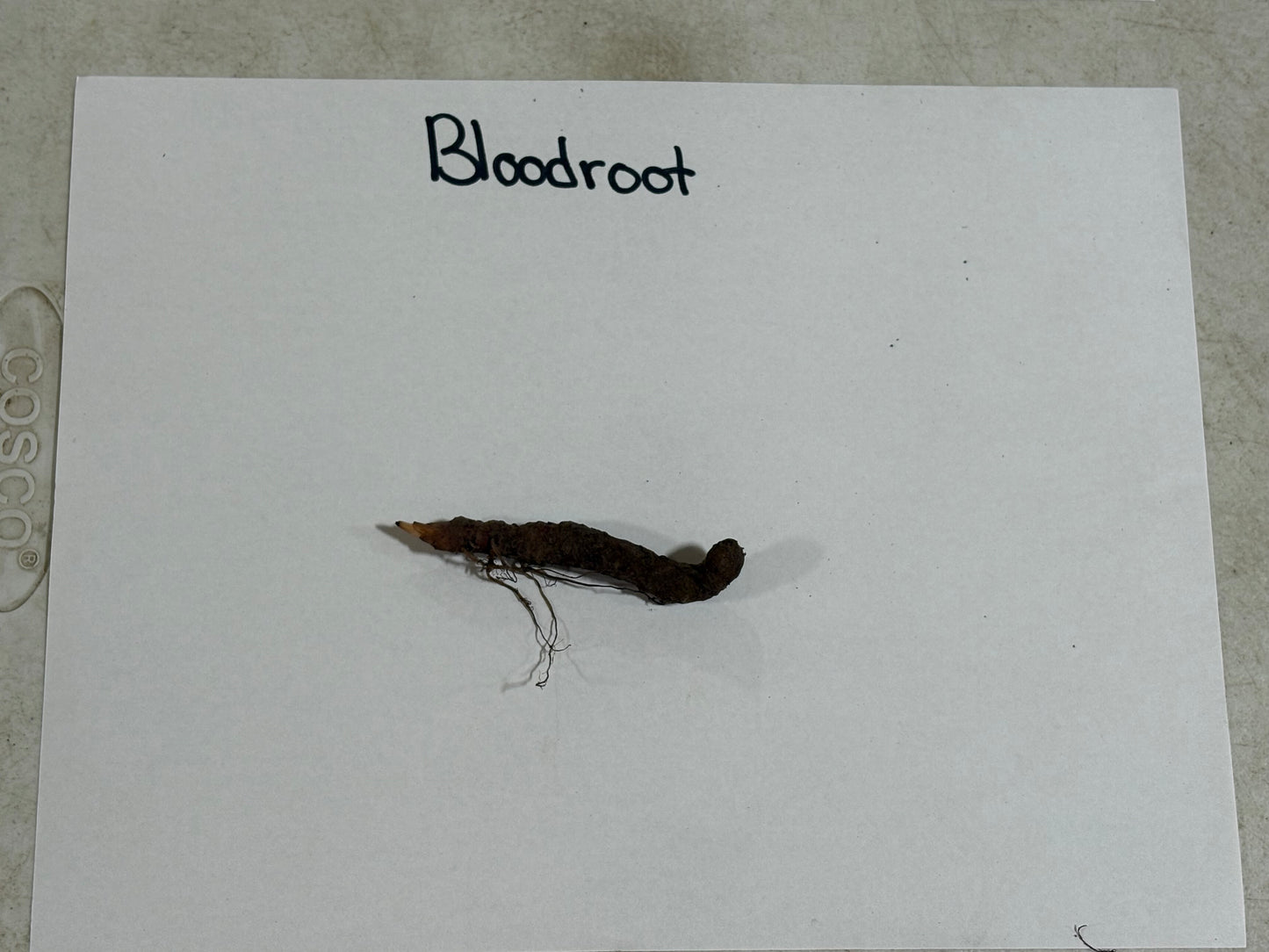Bloodroot
Couldn't load pickup availability
Ships 10-12 Days
Under 12"
Full Shade
3-7
Flowering
Bare-root
Sanguinaria Canadensis - Bloodroot
Bloodroot is a perennial favorite for its white flowers and easy-growing habit. This native woodland gem likes partial shade, making it ideal for gardeners looking for an easy-to-care-for plant. Its short root-like rhizomes make planting easy without requiring much digging or work. Once rooted, this perennial blooms year after year with elegant flowers in early spring.
Effortless Planting and Care
Planting this small plant is easy; it loves moist, well-drained soil. The soil should not require much watering; add extra moisture when there is not much rain. By weeding minimally and adding a thin layer of organic mulch, it will stay beautiful throughout the season. You may only require a mixed fertilizer for spring that will give lush leaves.
Bloom Time and Colorful Transition of Bloodroot
The primary blooming season is from early to mid-spring and lasts for about two weeks. Here, the petals take on a relatively straightforward appearance and often are clustered around shiny yellow centers. As the flowers wither, the leaves round into lobed forms, turning an even faint bluish-green. They retain visual interest long after the flowers fade, creating a lovely hue pattern.
The Graceful Life Cycle
Offered by TN Nursery, this plant exhibits an elegant habit. The plant emerges from hibernation when the weather warms up, shooting off its blooms before leaves appear. Once flowering is complete, foliage reigns and stays thick and full into late spring and summer. Fall leaves begin to dwindle as the weather gets cooler, and the rhizomes go on a much-needed winter hiatus. Appropriately placed and maintained at a low level, this perennial will thrive in your yard for seasons and add an enchanting element of natural beauty wherever you plant it.
This Is How Your Plants Will Look upon Delivery
Bloom/Foliage Color
White
Shipping date depends on the date displayed and chosen when you order from the product's page.
We do not offer warranties on products after 5 days past receiving your plants.




Quality delivered quickly. 1st rate plants. Exceeded exspectations!
The bloodroot looked very healthy when they arrived. Looking forward to seeing how they grow this year.
Ordered 100 Bloodroot for a woodland site installation. Was uncertain what to expect but box arrived just as scheduled. Tracking details were sent.
Admittedly, the box was smaller than anticipated, but roots enclosed look healthy and viable. Have yet to plant, but as per shipper instructions, roots are stored in veg drawer of refrigerator to maintain dormancy till weather breaks to allow planting.
Thanks for the 5 stars! Your review is a great way to let us know we’re on track for making our customers smile! We appreciate you taking the time to give your feedback and look forward to serving you again in the future.
Plants arrived in good shape.
Thank you for the awesome review about our plants, Clyde. We are so pleased to hear it is working just as it should and that you are enjoying it so much!
These plants look amazing around my garden. They blend in for the perfect backdrop.
Hi Lily, Your kind words about our plants are really appreciated. We love making our customer’s days and we cannot wait to have the opportunity to make you smile again! Thank you for choosing us!

